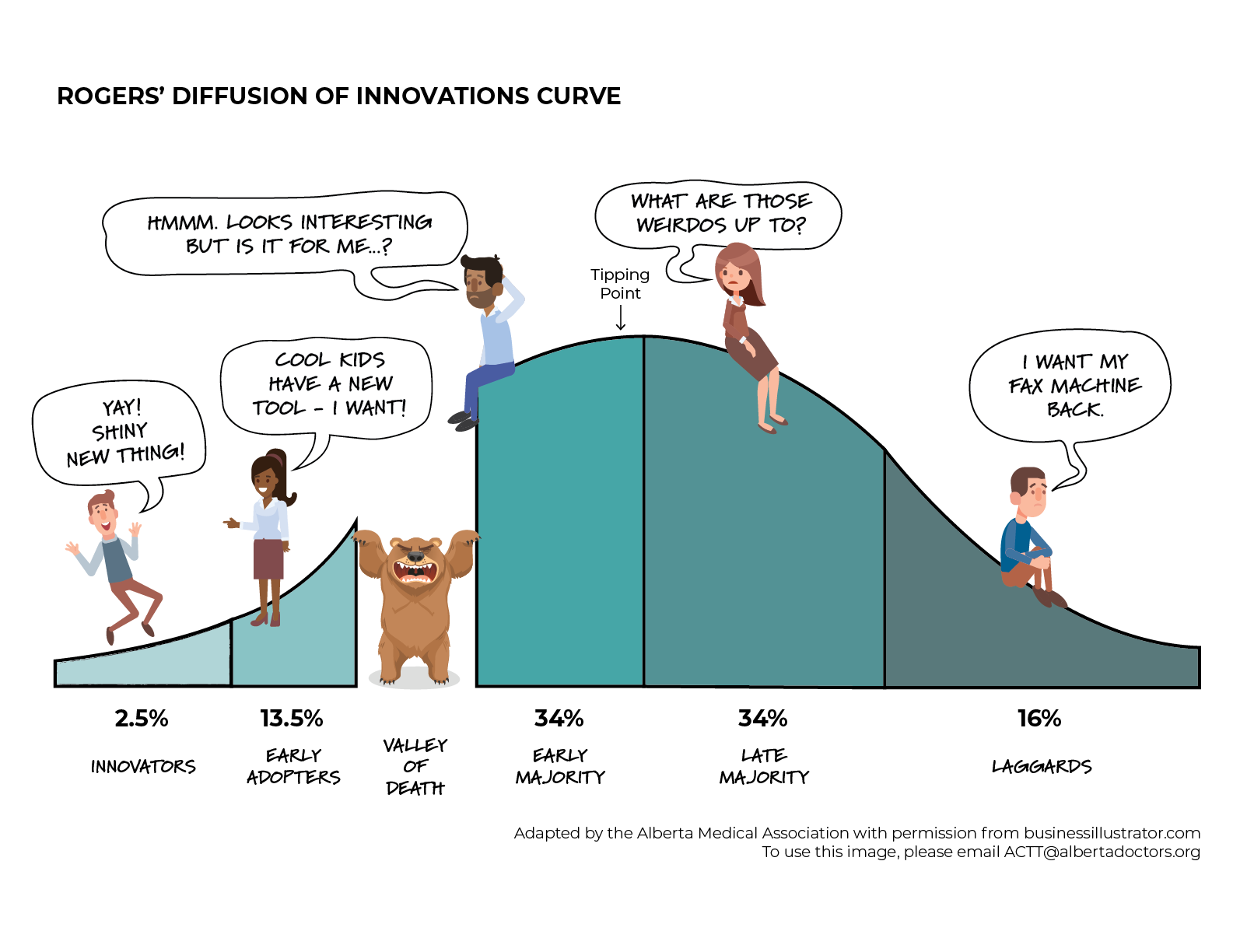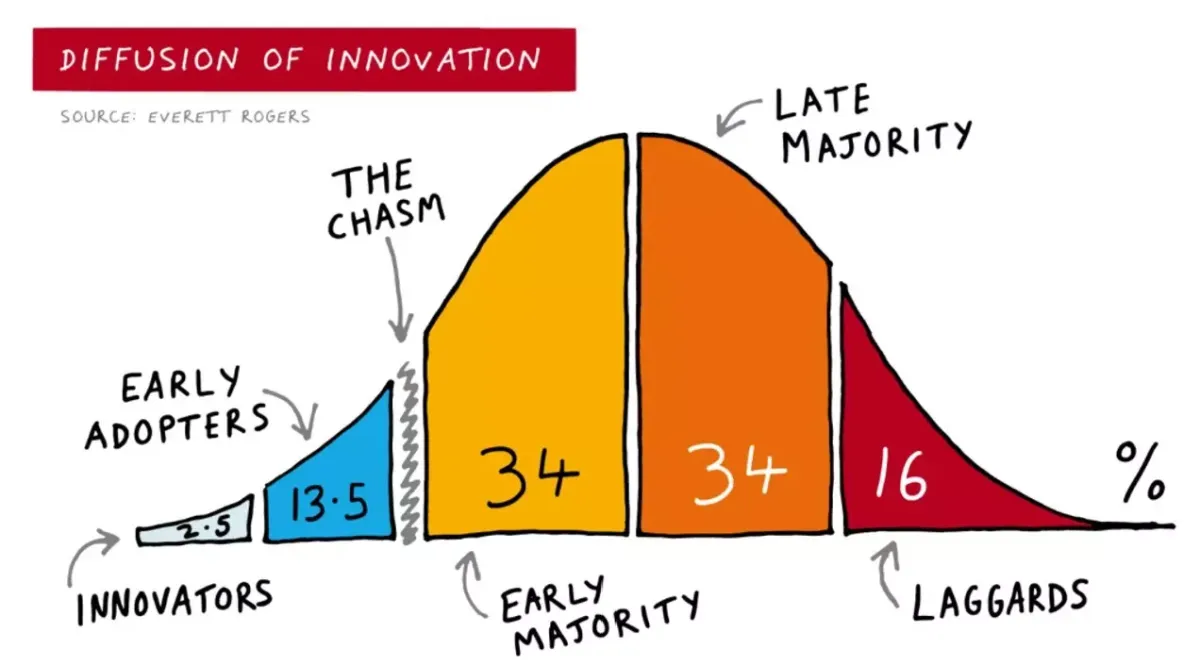Unlock the Secret to Successful Innovation: The Law of Diffusion of Innovations

Unlock the Secret to Successful Innovation: The Law of Diffusion of Innovations
Are you curious about how new ideas, products, or technologies become widely accepted? The Law of Diffusion of Innovations, introduced by Everett Rogers in 1962, holds the key. This groundbreaking theory has been widely applied in marketing, technology, and social sciences, and I'm excited to share its insights with you.
The Five Phases of Innovation Adoption
The Law of Diffusion of Innovations reveals a common pattern of adoption, divided into five distinct phases:
1. Innovators: The brave pioneers who dare to be different. They're risk-takers, always on the lookout for the next big thing. (2.5% of the population)
2. Early Adopters: The opinion leaders who set the trend. They're discerning, but eager to try new things. (13.5% of the population)
3. Early Majority: The cautious ones who wait for proof. They're practical, but willing to adopt once they see the benefits. (34% of the population)
4. Late Majority: The skeptical ones who need convincing. They're hesitant, but will eventually follow the crowd. (34% of the population)
5. Laggards: The resistant ones who prefer tradition. They're slow to adopt, but may eventually come around. (16% of the population)

The Key to Successful Adoption
So, how do you ensure your innovation takes off? The Law of Diffusion of Innovations reveals that targeting early adopters is crucial. They're the influencers who will promote your innovation and persuade others to follow. Once the early majority starts to adopt, the momentum builds, and the late majority and laggards will eventually join in.
Crossing the Chasm
To encourage widespread adoption, marketers and innovators must address the unique concerns and needs of each group. By engaging early adopters and transforming them into enthusiastic customers, you'll create a ripple effect that will motivate the early majority to get on board. This is what's known as "crossing the chasm."
The Future of Medicine: Biohacking, Functional Medicine, and Nutrigenomics
The Law of Diffusion of Innovations can also be applied to the emerging fields of biohacking, functional medicine, and nutrigenomics. These innovative approaches focus on prevention, personalized health, and root-cause analysis, rather than traditional symptom management.
Innovators and Early Adopters in the Health Space
Innovators and early adopters in the health space are already embracing biohacking, functional medicine, and nutrigenomics. They're seeking holistic, personalized approaches to health and wellness, and are willing to try new, unconventional methods.
The Early Majority and the Tipping Point
As the early majority begins to adopt these innovative approaches, we'll reach a tipping point. Biohacking, functional medicine, and nutrigenomics will become increasingly mainstream, and traditional medicine will be forced to adapt.
The Late Majority and Laggards: Integration with Traditional Medicine
The late majority and laggards will eventually follow, as the benefits of biohacking, functional medicine, and nutrigenomics become more widely recognized. We'll see greater integration with traditional medicine, as healthcare providers begin to incorporate these innovative approaches into their practices.
Unlock the Power of Innovation Diffusion
The Law of Diffusion of Innovations offers a powerful framework for understanding how new ideas, products, or technologies spread through society. By recognizing the different stages of adoption and tailoring your approach to each group's needs, you'll be able to introduce your innovations to the world with confidence.
In the context of biohacking, functional medicine, and nutrigenomics, this means embracing a holistic, personalized approach to health and wellness. By targeting innovators and early adopters, and addressing the unique concerns and needs of each group, we can accelerate the adoption of these innovative approaches and create a healthier, more empowered society.
Where Do You Fit in the Adoption Curve?
Are you an innovator trying the latest biohacks? A skeptic waiting for more proof? Or somewhere in between? The diffusion of innovations shows that every group matters—because even laggards eventually adapt.
Question for You: Which wellness innovation have you adopted—and where do you think it is on the adoption curve? Let’s discuss in the comments!





